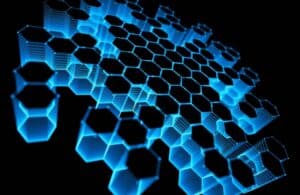The Science Blog

Wireless Energy Transfer: Powering the Future Without Cables
A World Without Cords
Picture a world where your smartphone charges right in your pocket. Electric cars could recharge while driving. Plus, remote areas would get electricity without needing any physical infrastructure. This is no longer science fiction. Wireless energy transfer, once imagined by visionaries like Nikola Tesla, is now becoming real. Wireless power is set to change our lives. As we depend more on electronic devices and seek sustainable solutions, this technology will impact how we work and connect with the world.
In this article, we’ll look at wireless energy. We’ll cover how it works, the technologies behind it, and its real-world uses. We’ll also discuss the challenges it faces and its potential effects on industries and daily life. You’ll also discover how this innovation ties into broader trends in future technology and what we can expect in the years ahead.

How Does Wireless Energy Transfer Work?
The Basic Principles
Wireless energy transfer sends electrical energy without wires or contact. The concept relies on electromagnetic fields to move energy between a power source and a receiving device. There are three main types of wireless energy technologies:
- Inductive Coupling – Uses magnetic fields between coils. Common in wireless phone chargers.
- Resonant Inductive Coupling – A more advanced version with greater distance and efficiency.
- Radiative Transfer (Microwave/Laser) – Transmits energy using focused beams over longer distances.
A Brief History
Nikola Tesla experimented with wireless power in the early 20th century, aiming to transmit energy globally. Even though his Wardenclyffe Tower project wasn’t finished, modern science has sparked new interest in the idea due to major technological advances.
Real-World Applications of Wireless Energy Transfer
Consumer Electronics
Today, wireless charging pads are mainstream, used for phones, smartwatches, and earbuds. But that’s only the beginning:
- Furniture with built-in chargers: Desks and nightstands with embedded charging zones.
- Wireless kitchen appliances: Induction cooking is being enhanced with energy transfer pads.
- Laptop charging stations: Several companies are developing wireless solutions for high-power electronics.
Automotive Industry
One of the most promising uses of wireless energy is in electric vehicles (EVs):
- Static Wireless Charging: Park and charge without cables.
- Dynamic Charging: Roads embedded with coils can charge vehicles in motion.
- Public transport: Buses equipped with wireless charging plates at bus stops.
Case Study: Oslo, Norway, is adding wireless charging for its taxi fleet. This will cut idle time and boost uptime.
Medical Devices
Wireless power is transforming healthcare:
- Implanted medical devices like pacemakers and neurostimulators no longer need surgery for battery replacement.
- Wearable health monitors can charge from nearby sources or body movement.
- Sterile environments benefit from reduced cable clutter.

Industrial & Military Use
In remote or hazardous environments, cables can be risky:
- Drones and robots use wireless energy to extend operational time.
- Military bases and forward camps are exploring microwave power beams to supply energy to off-grid locations.
- Factories employ wireless systems to reduce mechanical wear on cable connections.
Space-Based Solar Power
NASA and the Japanese Space Agency are developing systems to collect solar energy in space and beam it back to Earth via microwaves. This could offer uninterrupted clean power that is unaffected by weather or time of day.
Benefits of Wireless Energy Transfer
1. Convenience and Accessibility
No cables mean less clutter and more seamless integration into everyday life. For users with disabilities or limited mobility, wireless energy solutions provide more independence.
2. Enhanced Safety
Eliminating cords reduces tripping hazards and the risk of electrical shocks. This is particularly important in medical and wet environments.
3. Sustainability
Wireless transfer paired with renewable sources can cut down on energy waste and grid infrastructure:
- Smart grids with decentralised wireless nodes.
- Reduced battery waste through continuous trickle charging.
4. Greater Mobility
Wireless energy is helping create a more connected world. It allows for untethered lifestyles, like mobile workspaces and delivery robots.
Challenges & Limitations
Efficiency and Range
Wireless systems, especially over distance, lose more energy than wired options. Efficiency varies:
- Inductive charging: ~70-85% efficient.
- Microwave beams: Varies significantly depending on alignment and distance.
Health and Environmental Concerns
- High-power microwaves or lasers could pose health risks if improperly managed.
- Concerns about long-term exposure to electromagnetic fields remain under study.
Cost and Infrastructure
- High initial investment in infrastructure, especially for transport applications.
- Standardisation is lacking—interoperability between devices and systems is a key challenge.
Regulatory Barriers
Governments are still trying to keep up with laws about wireless energy. They are especially focused on how to allocate spectrum for radiative transfer.
Key Innovators and Global Trends
Companies Leading the Charge
- WiTricity – A leader in EV wireless charging tech.
- Ossia – Specialises in over-the-air charging solutions.
- Energous – Focuses on radio frequency (RF) power for consumer electronics.
Countries Investing in Wireless Energy
- South Korea: Smart cities like Songdo are testing dynamic EV charging.
- China: Heavy investment in electric roadways.
- United States: NASA’s space power beaming trials and DARPA-funded projects.
Patent and Research Activity
Wireless power transfer is one of the fastest-growing patent categories in renewable tech. Universities worldwide—such as Stanford, MIT, and Tokyo University—are at the forefront of R&D.
The Future of Wireless Energy Transfer
Integration with Smart Cities
Imagine walking through a city where benches, lamp posts, and buildings wirelessly power your devices. As IoT grows, wireless energy could serve as the backbone of urban connectivity.
Internet of Things (IoT) Devices
Low-power IoT sensors and wearables can gain a lot from constant wireless charging. This means they stay connected all the time and don’t need battery changes.
Transportation of Tomorrow
Self-driving cars and electric planes might someday depend fully on wireless charging stations and pads.
Space Exploration
Beyond Earth, wireless power will be crucial:
- Rovers and landers on the Moon or Mars are powered via microwave beams.
- Modular habitats are connected through wireless energy.
Advanced Innovations in Wireless Power
Resonant Beam Charging
This technology uses a safe, invisible beam to transmit power over longer distances than inductive methods. It enables the charging of multiple devices simultaneously in a room.
Ambient RF Harvesting
RF energy from Wi-Fi, Bluetooth, and mobile signals can be captured to power ultra-low energy devices like:
- Smart thermostats
- Environmental sensors
- Wearable fitness trackers
Quantum Dots and Nanotech
Using nanomaterials in receivers can boost efficiency and sensitivity. This makes it possible to harvest ambient energy, even in low-signal areas.
Frequently Overlooked Implications of Wireless Energy Transfer
Environmental Impact of Mass Adoption
Wireless energy is considered green, but its environmental impact needs attention. This includes increased devices and electromagnetic pollution. More devices powered continuously may mean:
- Increased energy consumption overall
- Accelerated electronic waste, unless accompanied by recycling systems
Security Concerns
With wireless data comes wireless power—but the two can intersect in ways that raise red flags:
- Could power streams be hacked or disrupted?
- What safeguards exist for unauthorised energy interception?
Ethical Considerations
Who controls the flow of wireless energy? In developing areas, this tech could boost corporate control. This may reduce local independence and create energy monopolies.
Governments and communities must collaborate with developers to create equitable, inclusive access.
Conclusion: The Dawn of a Wireless Energy World
Wireless energy transfer has gone from theory to real-world use. This change is a big step in how we view power distribution. From our homes and vehicles to healthcare and space exploration, wireless energy is set to shape the infrastructure of the future.
The road ahead has many challenges. There are technical, ethical, and regulatory hurdles. But the benefits are huge. They include convenience, sustainability, safety, and global connectivity. As industries adopt wireless systems, society needs to talk about how this change can benefit everyone, not just a select few.
Are you ready to unplug from the past and power into the future? Join the conversation! Share your thoughts below. You can also subscribe for updates on new tech trends that are changing our world.









